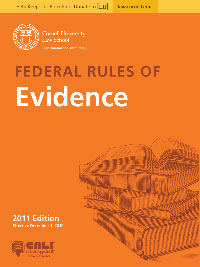 I’m a little behind on this, but in September of this year, the AOC announced revisions to the Federal Rules of Evidence in the form of “re-styling.” The Judicial Conference Advisory Committee on Evidence Rules explains:
I’m a little behind on this, but in September of this year, the AOC announced revisions to the Federal Rules of Evidence in the form of “re-styling.” The Judicial Conference Advisory Committee on Evidence Rules explains:
“The revision is intended to make the Evidence Rules easier to read, and to clarify, simplify, and modernize them without altering their substantive meaning,” said Judge Robert L. Hinkle (N. D. Fla). “There will be no change at all in the meaning or application of any rule. A judge or lawyer would get the right result using either a restyled rule or the old version. However, we think the chance of misunderstanding the rule is much smaller using the restyled version.”
The process began in 2007, and was released for the 2012 version of the FRE. As part of the effort, “Term usage was standardized, and the use of ambiguous words, such as “shall,” minimized along with outdated or archaic terms, intensifiers, and redundant terms and cross references. Rule numbers and citations were preserved to minimize the effects on research, but subdivisions were rearranged in some rules for greater clarity and simplicity. But terms were retained that have acquired special status from years of case law interpretation.”
Basically, the Committee tried to improve the language, make it more modern and easy to read, while retaining the substance of the enacted Rules. I think this is great — I’m all for plain English wherever possible. I downloaded CALI’s free version for the iPad and took a look. CALI’s version contains the Committee Notes, so it was pretty easy to see where changes were made in 2011. The changes are bigger than I expected, I was actually pretty impressed. Here’s what I found: If a rule was restyled, it contains the following note:
Committee Notes on Rules—2011 Amendment
The language of Rule 201 has been amended as part of the restyling of the Evidence Rules to make them more easily understood and to make style and terminology consistent throughout the rules. These changes are intended to be stylistic only. There is no intent to change any result in any ruling on evidence admissibility.
Aesthetic changes
Visually, the new rules look different (and more modern). The Committee replaced long paragraphs and run-on sentences with a cleaner outline format, offset subsections, and bullet points. The result is a rule that is quicker to digest and understand. For example, here’s Rule 201. Judicial Notice of Adjudicative Facts in 2011:
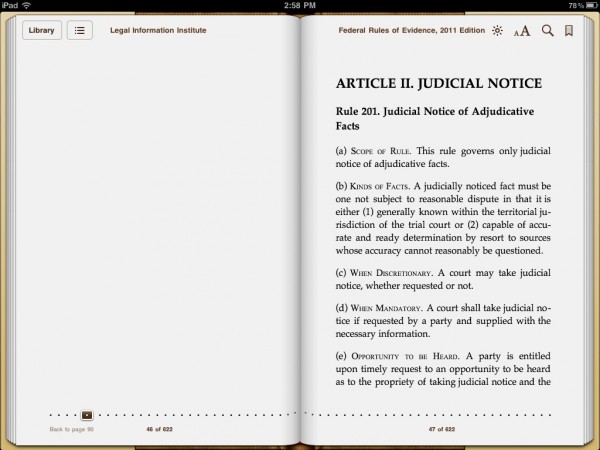
and here is the 2012 version:
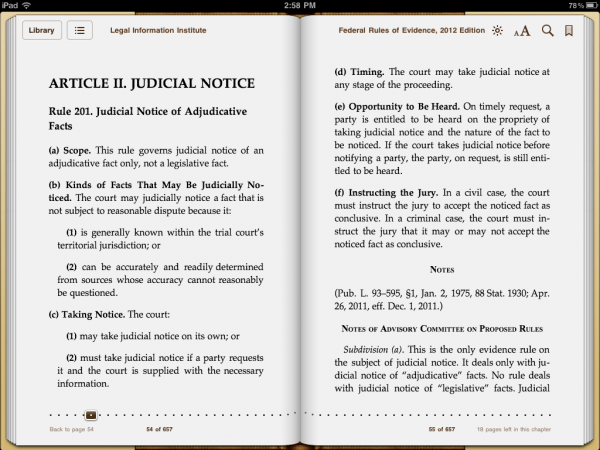
Similarly, see Rule 402. General Admissibility of Relevant Evidence
2011
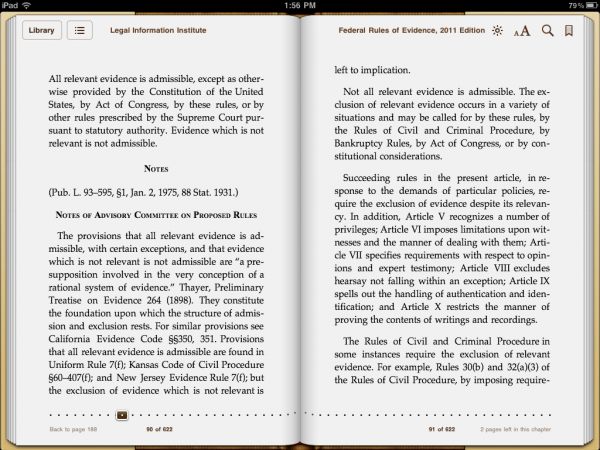
2012
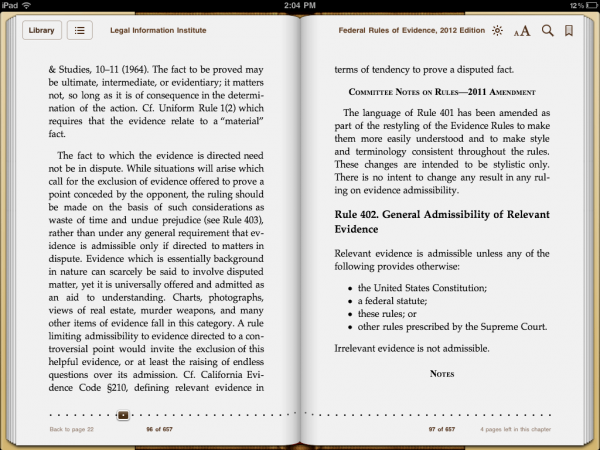
Standardized Terms
The 2012 version standardizes some of the language in the rules, as well. This makes the rules, as a whole, more consistent and easy to understand. For example, the 2012 version replaces “Act of Congress” with “federal statutes” and “Supreme Court pursuant to statutory authority” with “ “rules prescribed by the Supreme Court.” In many places, “accused” becomes “defendant.” In Rules 413-415, the 2012 version uses the terminology in all three rules: “Permitted uses” and “disclosure to the defendant” for introducing a victim’s sexual behavior in a sex offense case.
Elimination of Redundant Terms
The restyling changed the language to make them easier to read. The 2012 version employs a more active voice, economy of words, and simpler language. Some examples:
Rule 106 changes “contemporaneously” to “at the same time.” Rule 410 changes “in the course of” to “during,” and Rule 411 changes “does not require exclusion” to “court may admit.”
Rule 301 is edited from 73 words down to 50 in 2012:
2011
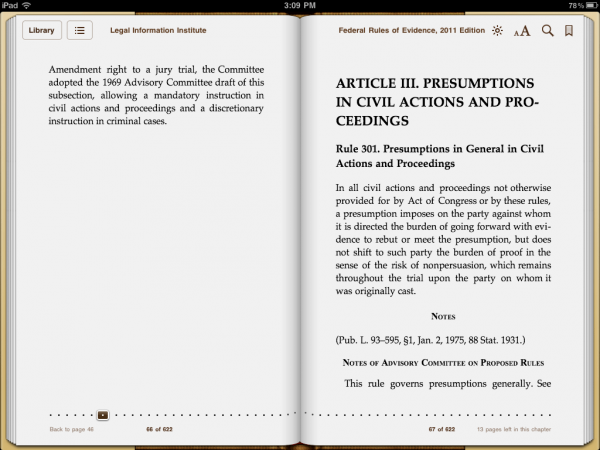
2012
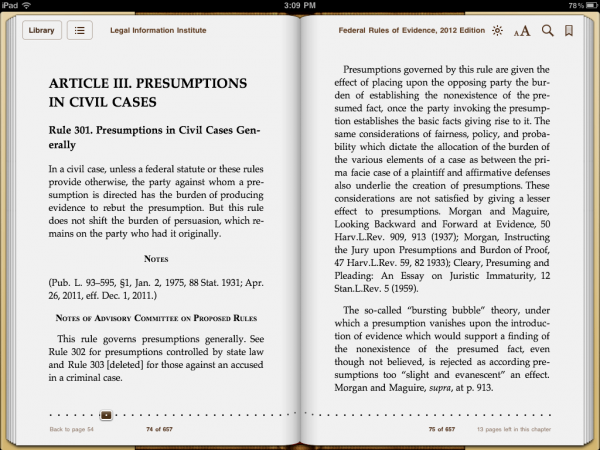
Even small changes can make the rules seem simpler and more current. For example, 2012’s 201(e) changes “upon timely request” to “on timely request. ”All in all, nice work by the Committee. Check out the free versions on CALI to compare for yourself.
